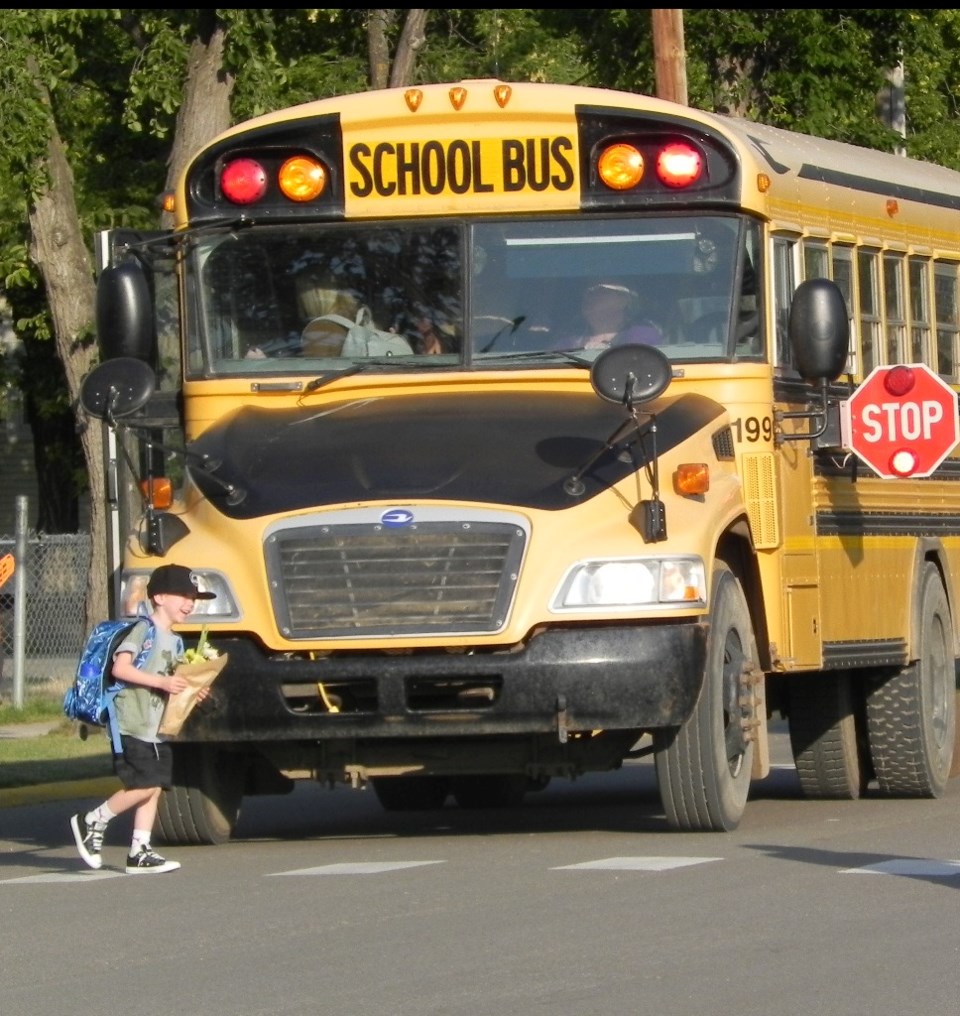MOOSE JAW — With the new 30 km/hr speed limit in school zones still controversial to many and set to take effect in a few weeks there is one group strongly onside — local school divisions.
And yes, it is all about safety around Moose Jaw’s schools. It will just take time to adjust to. But the local school divisions are ready for it.
“I think any change takes a while (to get accustomed to). The city has rolled it out over the summer and with any new rule there is going to be adjustment time for our drivers to be made aware of,” Todd Johnson transportation manager with the Prairie South School Division said.
Johnson said there was signage out for the past few weeks helping drivers get used to the changes.
Changes include not just the drop in the school zone speed limit but also the move to a 7 a.m. to 7 p.m. time frame, standardized school zone lengths and designated crosswalks brightly painted.
“I think people will be aware but there is also a learning period.”
School bus drivers are aware of the changes and have had defensive driving training to enhance safety, he said.
“We made them well aware even in the surrounding areas and some of our rural schools I let them know the changes…education and communication is the way we’re trying to solve this.”
Asked if he agreed the drop from 40 km/hr to a 30 km/hr school zone would be safer he said he did.
“I think the drop in speed is a drop in stopping time. So I would say yes (it’s safer),” Johnson said, adding, “I think anything that will slow down vehicles will help for sure.”
The stopping distance at 30 km/hr is 17.19 meters whereas the stopping distance at 40 km/hr is 26.86 meters.
While considering the school zone speed limit changes Council was told the 10 km/hr drop could mean the difference of a pedestrian being seriously injured or killed.
Ward Streuby superintendent for the Holy Trinity Catholic School Division said he wholeheartedly supported the change in the school zone speed limit.
“With the going from 40 km/hr to 30 km/hr, it’s a great move. We were one of the only places in Saskatchewan that was still at 40 and the research shows for every kilometre you drop that speed limit it’s safer,” Streuby said.
He said he would have to adjust to the change but it’s all about student safety.
“For drivers is it a bit of a nuisance? Absolutely. I myself will be checking my speed going through those school zones as well. But at the end of the day it’s about student safety and students sometimes leave our buildings really excited and they aren’t paying attention if drivers slow down a little bit it helps protect the kids,” Strueby said.
Several commented in July regarding no need for the drop in speed as there have been no safety concerns reported. Many pointed out the difficulty in certain school zones - especially hills - to drive 30 km/hr.
It’s something Mayor Clive Tolley commented on while speaking at the First Riders Program recently.
“On the way here I tried driving 30 km/hr by King George and right over here by Palliser Heights and it’s going to be a challenge going 30. But we all have to start doing that very quickly in September,” Mayor Tolley said.
School bus driver Denny Nikolic framed it as being a minor inconvenience but at the same time a major increase in safety.
“If you were to drive through four school zones in a day you might add 30 seconds to your travel time,” Nikolic said, while attending the First Rider Program adding how much safety would improve with such a small expense of time.
The new reduced 30 km/hr school zone speed limit is set to be officially rolled out on September 3, 2024, the first day of school, with the Moose Jaw Police Service issuing fines.
Until Sept. 3 the MJPS is using the time as an educational phase and issuing warnings, but could phase into receiving a ticket.




